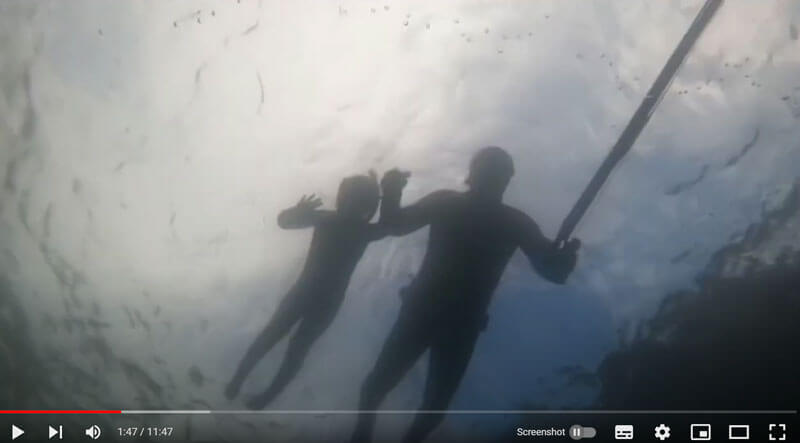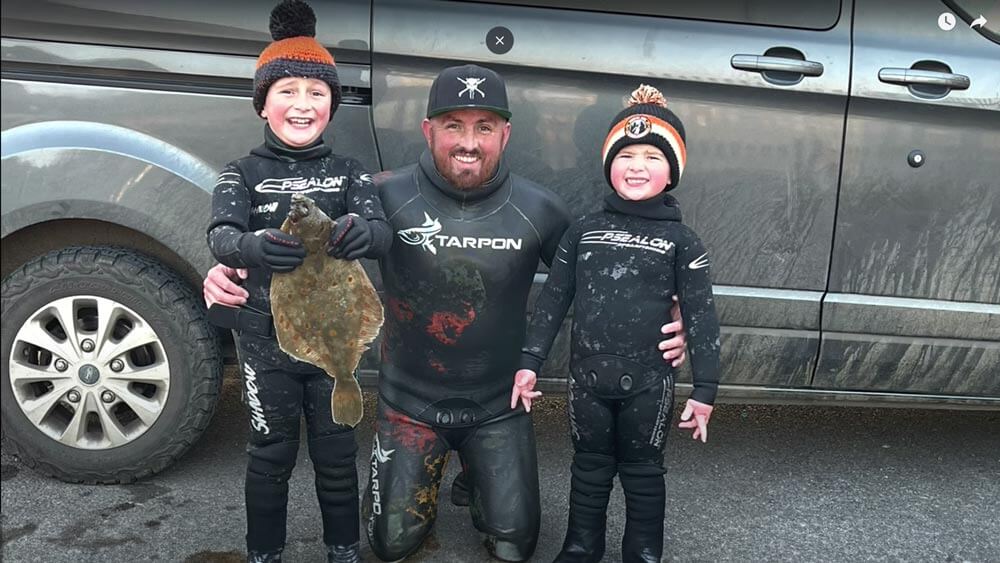
Credit: Celtic Country Pursuit
Spending time with your kids builds your relationship and boosts their confidence, but it can be a challenge when all they want to do is play on their console and all you want to do is get out into the ocean. So how do you get them interested in what you love?
Thankfully most kids love the idea of hunting down food to the feed the family. It’s an adventure, and that exploration and sense of discovery beats any thrill they’ll get from playing fortnight by a square mile. They’ll love the challenge as they learn how to hunt like their ancestors and survive without the comfort of supermarket shelves. They’ll feel more grown up and trusted. They’ll have something to brag about at school that, chances are, not many other kids can match. Plus, when they actually put food on the table, they’ll feel an incredible sense of accomplishment and pride, giving their self-esteem a healthy boost.
Did I mention family bonding? They might not appreciate it now but they’ll treasure these shared experiences and memories when they’re a little older.
Spearfishing, like all sports, carries its risks. However, it is worth pursuing and looking at how these can be mitigated and minimised, given the sport’s huge potential for boosting childrens’ wellbeing and teaching discipline.
Naturally when they first muse over the idea of getting their kids into spearfishing, many a parent’s first thought is, could I hand my child a speargun, would they shoot themselves… or me? It is helpful to think of introducing kids to the sport as a very gradual process that happens in small stages. As a parent you’re the one best to decide when they’re ready to progress through these stages and there’s no pressure at all to move on until they’re really ready.
Of course, they’ll need some gear to get started.
Gear for kids to start
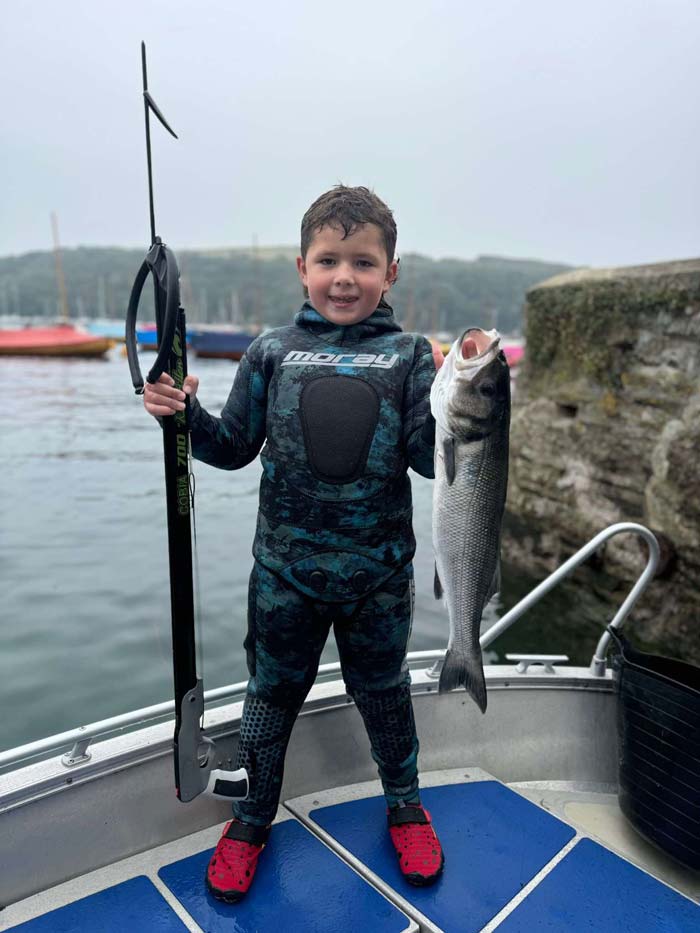
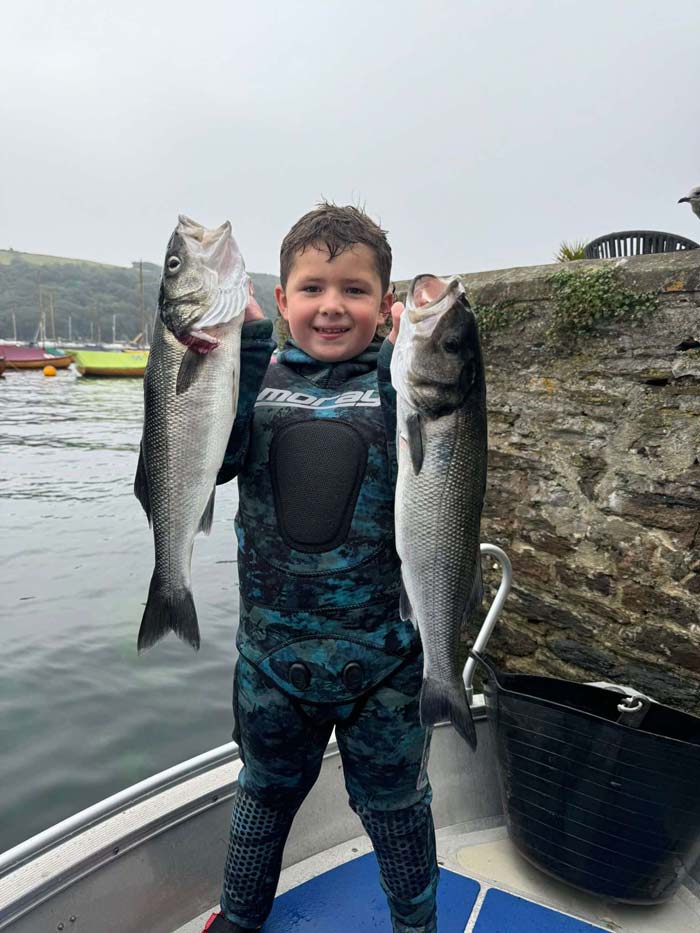
Wetsuit: when choosing a wetsuit, you have the same considerations as for adults – it needs to fit well so there are no pools of water. Bear in mind that kids experience water temperature differently to adults, so your child might be feeling the cold even if you feel fine. This is especially true of younger children and it’s because their body surface is greater than adults compared to their overall weight, causing a small child’s body to lose heat very quickly.
So choose a 5mm wetsuit minimum for UK temperatures. In the shop we have the Moray Junior Pelagic Reef 5mm in stock – however the smallest of these is suitable for heights from 150cm. We also have the Epsealon Shadow and this one goes from 8 years or 125cm (if you’ve ever looked at the height differences across a class of kids, you’ll know it’s best to look at the height rather than the age). This is a 2-piece suit so offers that extra bit of warmth around the core. It can take us a couple of weeks to get this one into stock so email us as soon as you’re interested and we’ll do our best to be quick!
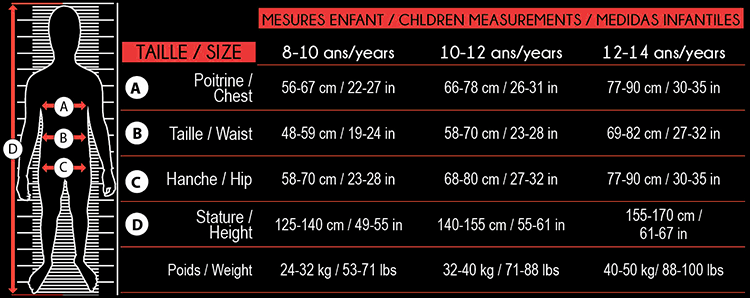
Another essential is correctly sized gloves to keep their fingers warm and so they can use their lobster hook, etc – and of course, when they eventually progress to a speargun they can feel the trigger and use it properly. Try the Picasso / Abysstar gloves and socks in XS or S size, which we have in 3mm and 5mm.
They’ll need socks, a mask and eventually a snorkel when they’re ready to try this. The mask needs to fit well so they are comfy.
What about full face masks? The first ones of these that were made had a serious issue of CO2 build up in the face pocket, making people black out and drown. There are slightly better versions now with a 2-way valve but they still have issues with C02 buildup and they’re only suitable for a short snorkel (-10 mins), they are not suitable for spearfishing. Aside from the CO2 issues, you can’t equalise in them, the dry top system does not work in a horizontal position when duck diving; and the volume of air contained in the mask is much greater than that contained in a traditional mask; from 1m deep, the pressure of the mask on the face becomes very uncomfortable. If your child struggles with water on their face (like mine does), try these exercises, starting in the swimming pool – they do help: Kingswim
Where to start
For young children (from around 4 to 7) and those not confident in water, the first step is to get them interested!
“My boys both started at about 4 I used to put scallops in the shallows without them knowing to get them confident and keen “
Watch Ceri’s kids building confidence putting their face into the water with a wetsuit on and mask, as they collect scallops from the seabed:
You can build confidence by getting them floating, swimming, getting comfortable in the water – this should be a slow and gentle process, whatever age they are.
“My Jamie started swimming along me in sea last year when he was 7 years old. This year I’m planning taking him for hunt in shallows”
Don’t rush this stage – you want them to love the ocean, to feel really feel happy and excited to be there and to love bringing back food for the family.
A fantastic idea for a confidence-builder is to use your float –
“I took my boy out last week – he just lay down on my float with a mask and snorkel so I could show him around as he was a bit nervous to jump straight in. Worked a treat and he got to see loads of wrasse/crabs/mullet etc. He can’t wait to get out again”
~ Ben Dunford (@thespearokitchen)
Watch the video:
View this post on Instagram
As they increase in confidence, teach them basic swimming techniques such as front crawl, backstroke and breaststroke. This could be bolstered by plenty of practice in the swimming pool. Once they’re swimming alone without the float, they’ll want fins.
Fins give power / control so are part of safety and they should not be swimming unaided in the sea without them. Choose freedive fins – plastic fins are fine for surface swimming and anything up to 15m so likely they won’t be going over this. Practice in the pool, they’ll enjoy powering down the lanes in record time.
Next steps
Only when they are confident in the water, i.e. surface swimming without a float or your hand, you may feel that they’re ready to progress. This could include introducing breathing techniques, static breath holds, equalisation, and how to duckdive properly. Teach them to take the snorkel out when they dive. All of this needs to be very closely supervised by a competent adult.
They need to know how the different stages of breath hold and how they should know (feel) they’re ready to resurface. They really need to understand how important it is not to push themselves along with a basic understanding of the risks, and to keep those dives shallow.
“Heaps of pool work makes a big difference. Put a $2 coin on the bottom of the dive pool and show them how to equalise, they soon get it.”
~ Don, via NoobSpearo
Good prey at this stage are spider crabs, lobsters etc and they could take a tool like a crab and lobster extractor or to help them pry those out of the holes in the rocks (and save their fingers). This will help get them used to having something in their hand while diving down.
Depending on what country you’re in, remember that they’re small and could be a target in the ocean. You might want to put yourself on the open water side. In the UK we have sharks but they are scarce and not dangerous generally speaking, most are catsharks and eat crabs and are generally super chill and will just swim off if you get near them. The only animal to be on the lookout for here is seals. They are generally friendly but obviously a wild animal with big strong jaws so make sure the kids know to keep their distance and don’t try and touch them.
Ideally if they’re around 9 – 10 or older, another skill to consider teaching them is CPR. Hopefully it’ll never be needed, and it’s a good life skill to have. This of course isn’t the easiest thing to teach in practice, and teaching them blackout rescue techniques (how to recognise, retrieve, revive and recover) if they have learnt to dive underwater is probably going to be a lot easier.
Most important is to teach them a process to follow if things do go wrong, such as getting to the surface, towing the unconscious diver to the shore and having a process in place to call for help, such as taking a Nautilus PLB or Radio or even just a phone to make sure you get help quickly.
As they advance you can look at techniques such as gradually increasing the distance they can swim under the water horizontally rather than vertically (DYN/DYNB) BUT again, this should always be very closely supervised by someone who knows about Samba, blackouts and how to recognise and deal with them. The most important thing is that kids should know to never, ever push themselves and keep it comfortable.
It’s a huge benefit if you can send them to freediving lessons or a course but probably for insurance reasons, most specify a minimum age of at least 12.
Adding a speargun to the mix
The million dollar question is of course, when to hand them a speargun. The answer to this is it’s NOT an age decision, it’s an individual child decision. You know your kids. Every child progresses at a different pace. To be ready, they need to understand that everything has potential consequences, they need a lot of patience, and they need to be able to concentrate, take in and act on what you are teaching them (especially safety pointers). But definitely don’t hand them a speargun until they’ve covered everything above and they’re really confident with it.
Riley, started diving with his parents Sarah and Matt without a gun at 12. At this age he was targeting spider crabs and came up with a juicy 2kg (imagine the look on your kid’s face then they land a beastie like this!!) He has had a speargun since 14 when his parents got him a 75 – he now uses a Rob Allen 70 with twin 14 bands which he won at the Spearfishing Cartel comp.
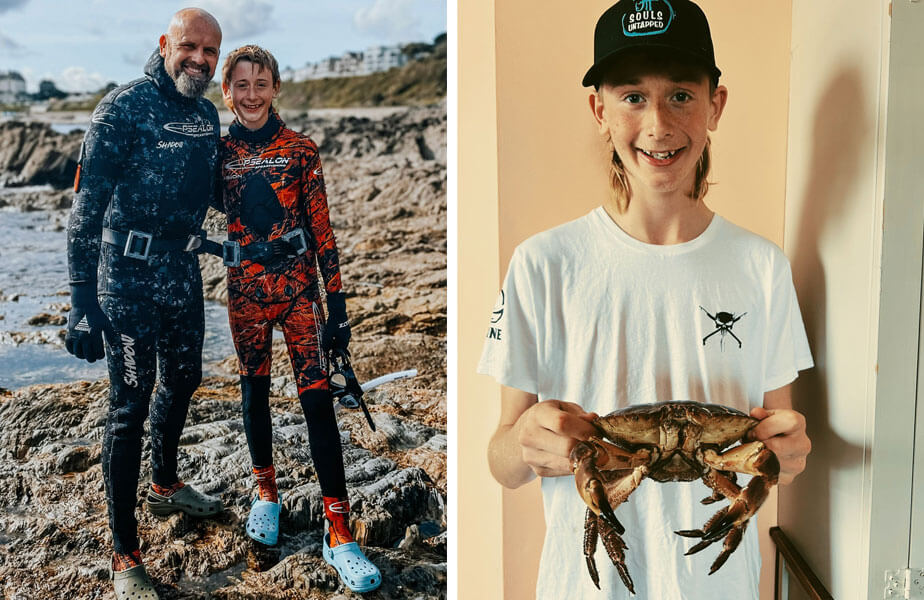
Above: Riley and his Dad Matt
Now at 15 he picked up the title of BSA Cornwall Competition Junior Winner for 2024, he won Best Junior at the 7th Peter Crawford Memorial Weekend and the Spearfishing Cartel 2024 (shooting a John Dory!) and he can dive down to 9 metres. You can follow his journey on Insta here: @cornish_fish_hunter and check out his signature scallop and prosciutto pasta dish here!
Ceri’s two are now 6 and 10 and both shoot from the surface. But, he points out, they have used shotguns from a young age so they understand the safety. You can click below to watch a dive with Ceri and one of his sons here – note how he helps his son swim down to retrieve the fish for their first shot, and later how he is holding his son’s hand and the speargun as they snorkel looking for fish:
But these examples should not guide your decision as to when your own child is ready. My son is almost 10 too, but he is definitely not ready to progress past the ‘young children’ activities just yet! Remember that you, as their guardian, are responsible not only for their safety but also for their actions if they shoot someone else! So don’t be in a rush to arm them – be absolutely confident that they’re ready.
Which speargun to choose
Choose a banded speargun, not a pneumatic: with the latter, it’s too easy to have an accident. Riley, above, uses 2 twin 14 bands. Don’s kid Max (when aged 10) had 3 x 10mm bands.
The easiest things to load that you can buy off the shelf are the single 14 or twin 14mm bands.
A load assist might be helpful for reaching the bands if they are further away i.e. because of kid’s short arms. It won’t help too much with physically loading the bands but it’s better than no help.
At this stage, depending on your own level of experience, you might consider a spearfishing course for your child. You may find younger years aren’t accepted, this is just because of insurance. If this isn’t an option then you’re going to be their only tutor and you need to cover speargun safety, shot placements, minimum fish sizes and bag limits, different species and where they can typically find them.
But clearly the very first rule is about where to point the gun 😊 It’s a potentially lethal weapon and just like a gun, it needs to be pointed in a safe direction when not pointed at a fish. Teach them to keep their finger off the trigger until they’re shooting.
Start their training at home, using anything long like a stick, broom handle, to help them get the idea of aiming with a straight locked arm. Teach them how to reset the spear and line out of the water, before doing it in.
Start with dives with an unloaded gun first to get used to holding it without shooting it. Put a speartip protector on the end to reduce the risk of them stabbing themselves or anyone else.
Don has a rule of one child at a time in the water in case there is a problem. Again this is up to you as a parent: you know your kids.
Once your kids are armed, consider whether to take your own speargun in too or not. This really does depend on how confident and capable the kids are. You might want to keep your hands free to help them, until they don’t need it; or you might want to hold the only gun like Ceri, until they’re ready to use it.
I hope this guide gave you some ideas of how you can bring your own kids into the sport. If you have any more tips of your own on helping kids learn to spearfish that you’d like to share, please drop me an email and I’ll do my best to include them – jenw@spearfishing.co.uk

